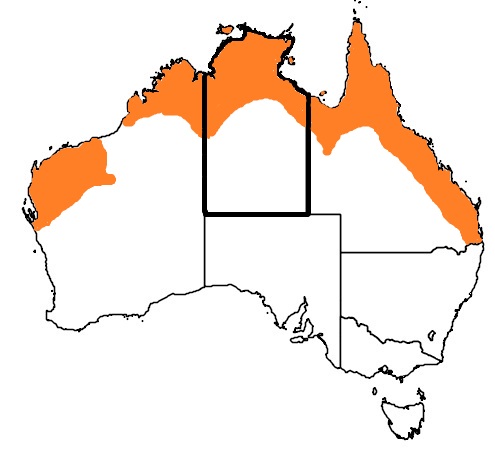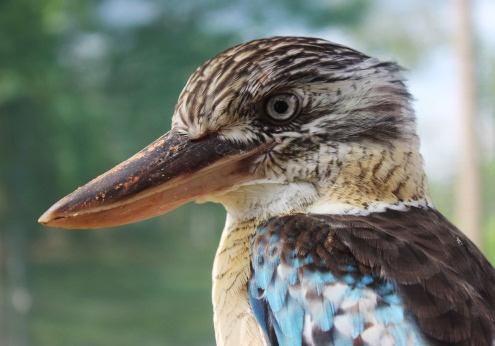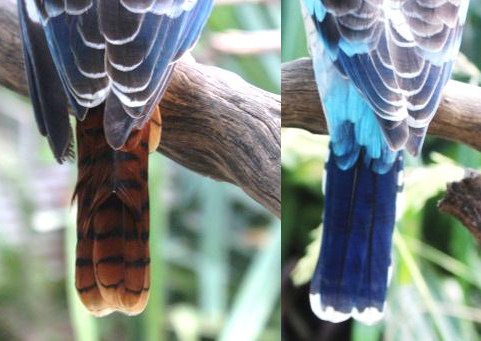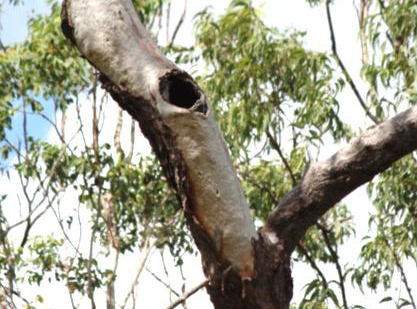Scientific name NT Conservation Status  | 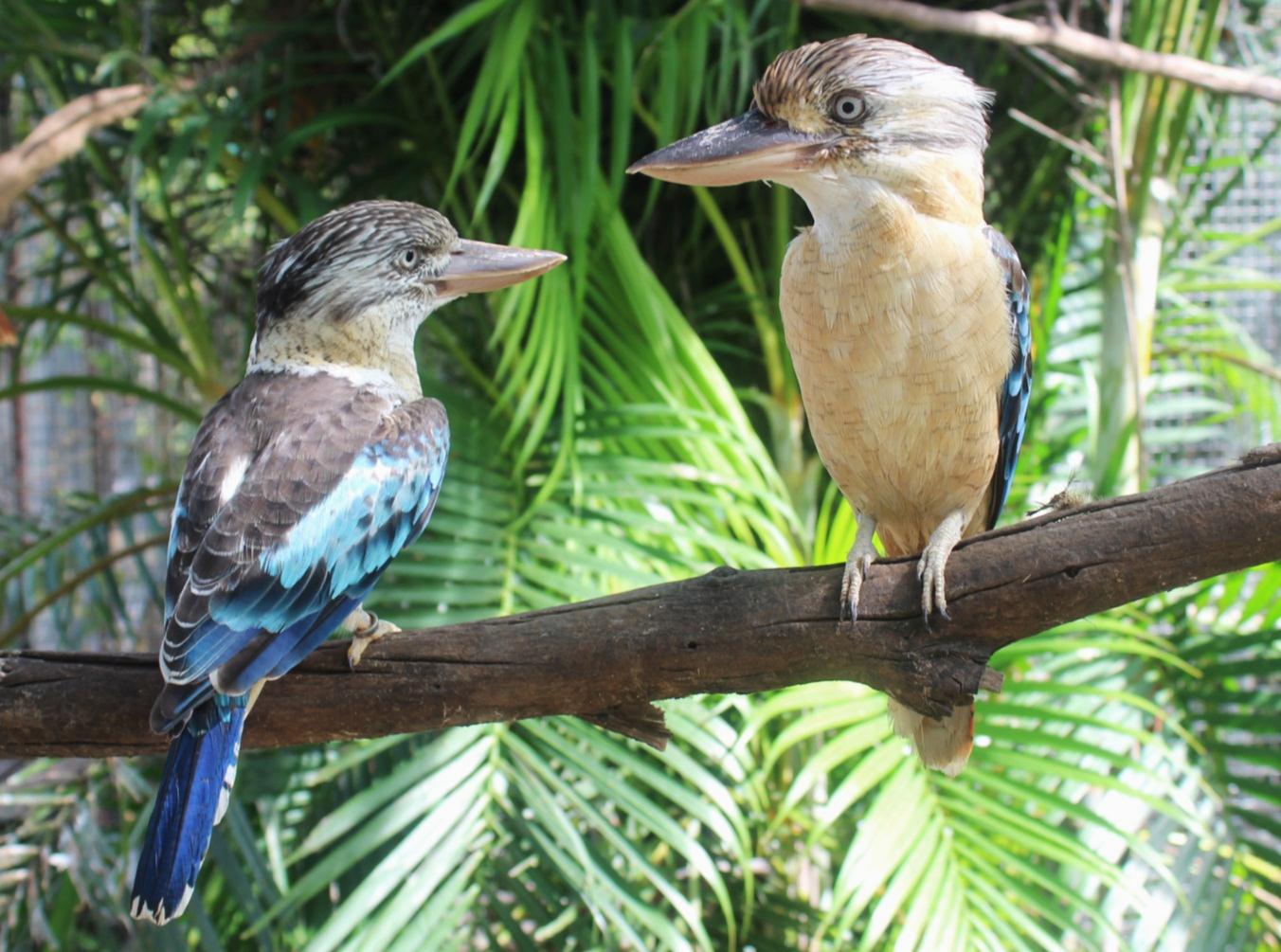
|
Distribution map | Length 380-420mm |
Identification
It has blue wings and rump with brown shoulders and a creamy barred breast and belly. Birds are sexually dimorphic, females having a brown tail and males having a blue tail.
Behaviour
Found in family groups of up to 12 individuals. Feeds on a large variety of prey found on or close to the ground including insects, lizards and frogs to small birds, rodents, fish and even crayfish.
Reproduction
Nest is high in tree hollows or arboreal termite nests. Both parents help incubate the 3-4 white eggs for 25 days followed by previous offspring and parents who feed and raise the chicks for another 36 days when fledged.
Habit
It lives in open savannah, woodland and Melaleuca swamps across northern Australia from Shark Bay in WA to Brisbane.
Threats
Fire, vehicles, habitat loss, feral cats
